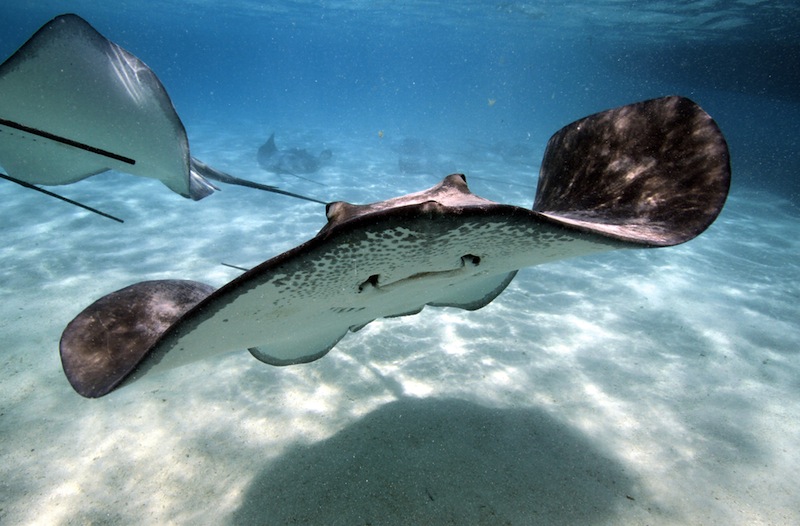Stingrays' Weird Swimming May Inspire New Submarine Designs

Sometimes the answers to some of the most challenging problems with technology can be found in nature. Researchers hoping to design more maneuverable and fuel-efficient submarines are taking cues from the unique and elegant way stingrays swim.
Scientists at Harvard University and the University at Buffalo are studying how stingrays move, including the seemingly effortless way the fish's round and flattened bodies ripple through water. The new research could inspire the development of next-generation unmanned submarines for ocean exploration, clean-up efforts or rescue missions.
"Most fish wag their tails to swim. A stingray's swimming is much more unique, like a flag in the wind," Richard Bottom, a mechanical engineering graduate student at the University at Buffalo, said in a statement. [Image Gallery: Catalogue of Strange Sea Creatures]
Bottom and his colleagues used complex algorithms involved with computational fluid dynamics to map the way water flows around live, swimming stingrays. The 3D models identified patterns of spinning fluid regions known as vortices that form along the stingrays as they propel themselves through the water.
In particular, the scientists zeroed in on the so-called leading-edge vortex, which is the vortex at the front of an object in motion. As stingrays swim, vortices create favorable pressure fields on their bodies — low pressure on the front and high pressure on the back — which help push them forward in the water.
This phenomenon has been studied in flying birds and insects, but Bottom and his colleagues believe this is the first time the leading-edge vortex has been studied in underwater locomotion.

For insects, the leading-edge vortex is one of the most important mechanisms involved with generating the thrust necessary for flight. And, since movements through air and water are based on similar properties, understanding how these vortices work is important for the development of a diverse range of moving vehicles.
Sign up for the Live Science daily newsletter now
Get the world’s most fascinating discoveries delivered straight to your inbox.
"By looking at nature, we can learn from it and come up with new designs for cars, planes and submarines," Iman Borazjani, assistant professor of mechanical and aerospace engineering at the University at Buffalo, said in a statement. "But we're not just mimicking nature. We want to understand the underlying physics for future use in engineering or central designs."
The researchers will present their findings at the 66th annual meeting of the American Physical Society Division of Fluid Dynamics on Nov. 24 in Pittsburgh, Pa.
Borazjani and Bottom intend to expand their research by studying the changes in movement between different types of stingrays.
Follow Denise Chow on Twitter @denisechow. Follow LiveScience @livescience, Facebook & Google+. Original article on Live Science.

Denise Chow was the assistant managing editor at Live Science before moving to NBC News as a science reporter, where she focuses on general science and climate change. Before joining the Live Science team in 2013, she spent two years as a staff writer for Space.com, writing about rocket launches and covering NASA's final three space shuttle missions. A Canadian transplant, Denise has a bachelor's degree from the University of Toronto, and a master's degree in journalism from New York University.
'A relationship that could horrify Darwin': Mindy Weisberger on the skin-crawling reality of insect zombification
'Dispiriting and exasperating': The world's super rich are buying up T. rex fossils and it's hampering research
Trove of dinosaur footprints reveal Jurassic secrets on Isle of Skye where would-be Scottish king Bonnie Prince Charlie escaped










